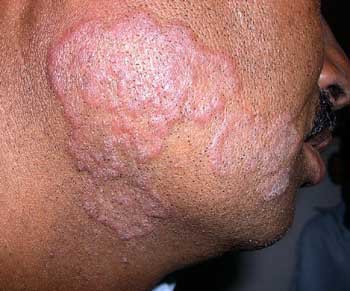
Tina Cruris medications are usually applied to the affected skin to treat the symptoms of the disease. Topical agents such as liconazole are available in 1% creams, lotions, and solutions and are indicated for the treatment of cutaneous tinea. In severe cases, systemic antifungal therapy may be necessary to control the outbreak. Patients can choose from griseofulvin, fluconazole, or terbinafine. Local pruritus is the most common symptom. Chronically involved skin can also develop brownish discoloration.
Upon transfer to the Odom Correctional Institution, plaintiff requested a reorder of her tinea cruris medications. When Hinds refused to reorder the medication, she endured the discomfort for a month. She then submitted a sick call request to her medical doctor, Dr. Land, but she failed to examine her, prescribe her Lotrisone, or perform any tests on her. Instead, she was given medicated powder instead.
The plaintiff’s underlying condition of tinea cruris was caused by a faulty prescription for her tinea cruris medication. Her doctor prescribed her a prescription for Lotrisone, which she took for a month until her condition improved. She was transferred to another correctional facility, Odom Correctional Institution, where she requested a re-order of her Tina Cruris medications. She incurred severe discomfort during this time, but was unable to make any progress. After submitting her sick call request to Odom Correctional Institution, she was not given any medicines or tests. She was provided with medicated powder.
Her condition deteriorated and she was transferred to Caledonia Correctional Institution. She submitted a sick call request to Dr. Land, but he did not order her prescription. Then, she continued to suffer from the pain for another month. She eventually took a sick call, but Dr. Land did not examine her or conduct any tests on her. She was treated with medicated powder. However, she received no relief.
In the majority of cases, the appropriate treatment of Tina Cruris is successful, although recurrence is a common problem. A proper diagnosis requires a biopsy of the affected area and careful monitoring of the patient’s underlying condition. In some cases, a doctor may need to perform a surgical procedure. If the infection is severe, amputation is necessary. Amputation is an option for treatment.

A topical medication for tinea cruris is the most effective treatment for this condition. Both fungicidal and antifungistatic antifungal agents are available, and are highly effective in treating this condition. Butenafine is a topical agent that is available in 1% creams. It also causes hyperpigmentation. A doctor should be able to distinguish between a symptomatic and chronic rash.
After a month of suffering from ringworm, the plaintiff was transferred from Lanesborough Correctional Facility to Caledonia Correctional Facility. He was transferred to another prison and asked to replenish the supply of drugs for ringworm. Although the latter was not approved, his doctors did not give him Lotrisone, which was the only medication he was prescribed. He was forced to take medicinal powder.
Generally, a topical antifungal is the most effective treatment for ringworm in the groin. Two types of antifungal drugs are currently available: fungicidal allylamines and fungistatic azoles. You can find more information about drugs that treat fungus on the website iHealzy Thailand. The combination of these two drugs is the best choice for most cases of tinea groin. If the disease has progressed, oral antibiotics will help prevent it.
After a month of suffering, the plaintiff filed suit in federal court against Hinds Correctional Facility for violating his constitutional rights. He was denied her medication, but Dr. Land refused to change her medication. The doctor also refused to conduct an examination, conduct tests and prescribe Lotrisone, which causes thinning of the skin. The drug replaced her medication.
The plaintiff’s lawsuit alleges that her doctor prescribed steroid-based medications to her. This medicine, called Lotrison, causes severe thinning of the skin and loss of muscle mass and tissue. She received these drugs for ten years, but after that her skin was no longer healthy. During this period, she suffered from severe ringworm, which caused all her hair to fall out. The plaintiff refers to these drugs in connection with her condition.